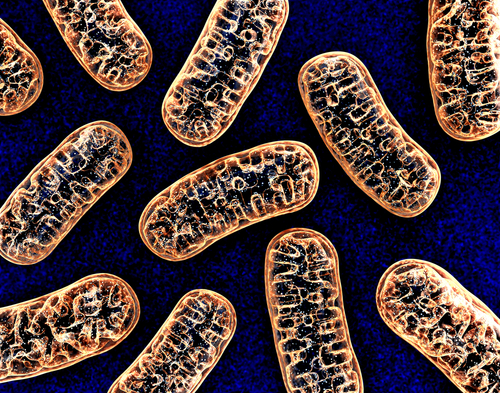Increasing mtDNA Levels Holds Potential for Tackling Mitochondrial Diseases, Mouse Study Suggests

Increasing the number of copies of mitochondrial DNA, or mtDNA, may relieve symptoms of mitochondrial diseases and provide a new treatment approach for these disorders, a preclinical study in mice suggests.
Because absolute levels of mtDNA can influence disease symptoms, pharmacological or gene therapy approaches that selectively increase the number of mtDNA copies may potentially treat diseases caused by mtDNA mutations, the researchers say.
Their study, “Modulation of mtDNA copy number ameliorates the pathological consequences of a heteroplasmic mtDNA mutation in the mouse,” was published in the journal Science Advances.
Diseases affecting the mitochondria — which produce most of a cell’s energy — are often caused by mutations in the mtDNA.
Each mitochondria contains its own mtDNA, which consists of a circular DNA coding for several proteins needed for mitochondria to work and generate energy. Many of these are involved in oxidative phosphorylation — the biological pathway through which oxygen brought by respiration is used to produce ATP, the ready chemical energy used by cells.
Many mitochondrial diseases result from mutations in mtDNA that wreck oxidative phosphorylation. This is why they affect mainly tissues with high energy demands such as the brain, skeletal muscle, and heart. To date, these diseases are still lacking effective treatments, with clinical management targeting only symptoms.
There are multiple copies of mtDNA in every cell, and the vast majority of disease-causing mutations are only present in a proportion of all mtDNA molecules, a condition called heteroplasmy.
This means that for most disease cases, mutated and normal mitochondrial DNA coexist in the same cell. And the mutated mtDNA will only cause symptoms when the number of copies exceeds a critical threshold.
“Although our current understanding of the threshold effect is limited, it has been previously observed that the threshold can vary from mutation to mutation, from organ to organ, and between different family members,” the researchers wrote.
Some data from human patients suggests that the total amount of mtDNA may influence to what extent a given mtDNA mutation leads to disease. But experiments testing this possibility are still lacking.
Researchers at Karolinska Institutet in Sweden have now shown that it is possible to alleviate the symptoms of mitochondrial disease in mice by increasing the total levels of mtDNA.
To that end, the team used a mouse model carrying a mtDNA mutation that “recapitulate many features of human mitochondrial disease, develop a mild progressive cardiomyopathy [defect in heart muscle] and cytochrome c oxidase (COX) deficiency in many organs,” they wrote.
Cytochrome c is one of the proteins needed for oxidative phosphorylation, and its deficiency is a common cause of a type of mitochondrial disorder called Leigh syndrome.
They manipulated the total amount of mtDNA by genetically engineering these mice to either increase or decrease the production of a protein called TFAM, known to control the number of mtDNA copies.
After doing this, the scientists observed that a roughly 50% increase in total mtDNA levels lowered the signs of mitochondrial disease in multiple tissues, including a partial rescue of cardiomyopathy as well as COX deficiency in the heart and colon.
Conversely, a reduction in mtDNA levels worsened the disease manifestations in non-proliferating (or postmitotic) tissues, such as the heart.
However, in contrast to the heart, a lower mtDNA led to an unexpected benefit in rapidly proliferating tissues, such as the colon, due to a selective elimination of the mutated mtDNA over time.
This happened because as the total mtDNA decreased, there was a faster expansion of mutated mtDNA, and cells with high levels of mutated mtDNA and defects in energy production were selected against.
“Our study demonstrates that the increase of the absolute levels of mtDNA in mice can improve mitochondrial function and improve symptoms of mitochondrial disease, even though the absolute amount of mutated mtDNA increase,” Roberta Filograna, PhD, a researcher in the department of medical biochemistry and biophysics at Karolinska Institutet and the study’s first author, said in a press release.
This suggests that “pharmacological or gene therapy approaches to selectively increase mtDNA copy number provide a potential treatment strategy for human mtDNA mutation disease,” the team concluded in the study.






